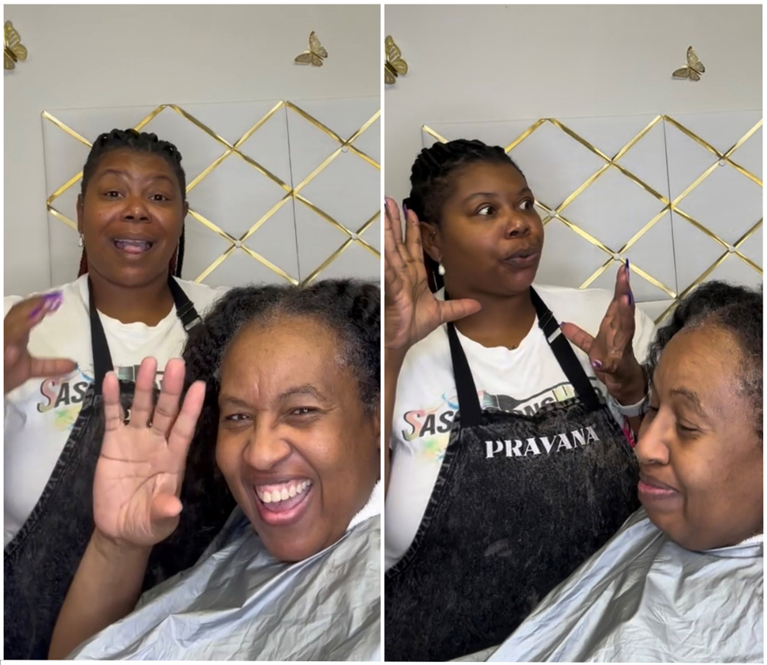
Effective communication is fundamental to the success of any business. And this is especially important in the beauty and wellness industry in order for beauty professionals to have a solid understanding of clients’ desires and needs to deliver personalized and satisfactory services. But it becomes even more crucial when serving clients who are D/deaf or hard of hearing as communication barriers can arise to negatively impact the overall salon experience.
To gain a better understanding of how stylists can effectively communicate with D/deaf or hard of hearing clients, we spoke with Thomasena Brown (@sassations), a licensed cosmetology instructor, Sign Language Interpreter, and Pravana Senior Artistic Educator. Brown has dedicated her career to bringing awareness to and promoting inclusivity for those who are D/deaf and hard of hearing in the beauty community. Read on to learn more about her best practices and practical tips for helping to overcome communication barriers and provide an inclusive, welcoming salon experience for all.
SalonCentric: What are some best practices that beauty professionals can put into practice to ensure a welcoming and inclusive environment for D/deaf and hard of hearing clients?
Thomasena Brown: Communication is the number one challenge, and not talking directly to your D/deaf or HOH—hard of hearing—client during conversations or with gestures can be dismissive. Keep a notepad and pen, as well as downloading an app that demonstrates simple conversational words.
SC: Are there any specific strategies or techniques you would recommend that would make communication easier between D/deaf clients and beauty professionals who do not know sign language?
TB: Believe it or not, our body language itself is a perfect example of how we can communicate with D/deaf clientele. Always try to make your message as clear as possible, while giving eye contact, using your full body and acting out the message. Many D/deaf people will show you the true sign if you ask. It’s important to relax, give eye contact, and avoid yelling or staring. If you don’t understand, then make sure to explain that to the client. In the same way hearing people want to be heard for understanding, so does the D/deaf and HOH community. Therefore, it is important to not automatically assume or treat a D/deaf or HOH person as handicapped or impaired.
SC: How can a beauty professional respectfully ask a D/deaf or HOH client what their communication preference is?
TB: Always let the D/deaf client take the lead and advocate for themselves. If you feel the communication is broken, be honest and be open to suggestions.
SC: What educational platforms, tools or training programs would you recommend to beauty professionals to begin learning sign language?
TB: There are a few apps out there that can teach some fundamentals of the language. You can also use YouTube, but I would suggest learning from someone who is actually D/deaf. My favorite is Bill Vicars (@sign-language), who has lessons for beginners as well as advance practice videos. They are all amazing and with no audio, which makes it feel more real and encouraging when you understand it. There are also Interpreter Technology Programs (ITP), like the one I graduated from that teach full American Sign Language [ASL] structure and to prepare you for learning the ropes as an interpreter. Lastly, get to know the D/deaf community. They are the best teachers.
SC: What do you hope to achieve through your efforts in improving communication and inclusivity for D/deaf and HOH clients in the beauty industry?
TB: I would love for us to be welcoming to all individuals. Learning basic signs and finger spelling practices, gives us an opportunity to ease any fear of communication that a D/deaf or HOH person may have.
SC: How can beauty professionals can continue to support the D/deaf community outside of the salon?
TB: Outside of the salon, we as beauty professionals can get involved with our state school for the D/deaf and blind. We can also volunteer our time, make donations, or learn sign language. These are just a few examples of how we can support the community.

